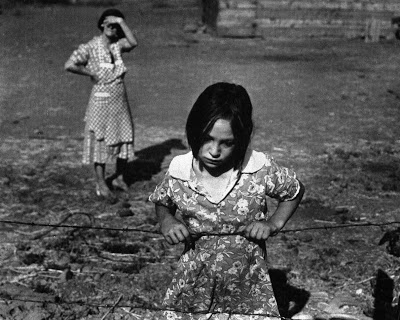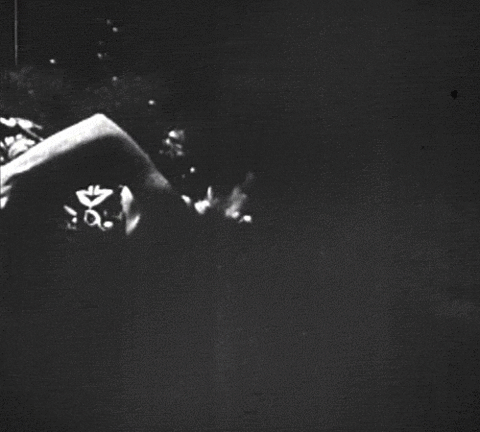Notes on Mark Epstein’s beautiful book from 2013
Suffering
Buddha “taught one thing… suffering and its end.”
There are still contemporary versions of the ancient ascetics… people convinced of their own unworthiness, who cling to their negative feelings.
Trying hard to be a good son, to satisfy the demands of his father and stepmother (his mother died a week after he was born), the Buddha constructed a “caretaker self” for the benefit and protection of his parents but lacking in authenticity.
Kids who suffer trauma flee physical experience to a haven in their minds called the “caretaker self.” They suffer from a reduced sense of their own vitality. Based on an insecure attachment, its stance is inherently mistrustful.
Winnicott: The normal child enjoys a ruthless relation to his mother, mostly showing in play, and he needs his mother because only she can be expected to tolerate his ruthless relation to her even in play, because this really hurts her and wears her out. Without this play with her he can only hide a ruthless self and give it life in a state of dissociation.
An infant’s ruthless mix of appetite, need and distress is well known to any parent – and it is the parent’s gut response to engage these rudimentary emotions and make them bearable for their child. When this does not happen adequately, when the painful emotions or unpleasant feelings are not picked up and handled by the parents, the infant is left with overwhelming feels s/he is not equipped to deal with, feelings that often get turned into self-hate.
Robert Stolorow: From recurring experiences of malattunement, the child acquires the unconscious conviction that unmet developmental yearnings and reactive painful feeling states are manifestations of a loathsome defect or an inherent, inner badness.
Mother
How to deal with trauma? Make your mind like a good-enough mother. (Buddha’s mother died a week after his birth. His practice is a reaction shot to this trauma.) Meditation holds the mind the way mother provides a holding environment for child. Parallels the non-interfering and non-reactive attention of good-enough mother, helps to disillusion the ego.
Peter Forgay: The infant only gradually realizes they’re in a holding environment, parent mirrors kid’s feelings, reflects and interprets them. Kid doesn’t know what their feelings are, can’t name, symbolize or understand, depends on adults for this. Parent attends to child (I hear you) but lightens feelings with ironic detachment (It’s not the end of the world). This is sensitive attunement. This develops the capacity of the kid’s mind to understand what feelings are and how to deal with (symbolize) them.
Winnicott: You see two infants: one has been held (in my extended sense of the word) well enough, and there is nothing to prevent a rapid emotional growth, according to inborn tendencies. The other has not had the experience of being held well and growth has had to be distorted and delayed, and some degree of primitive agony has to be carried on into life and living. Let it be said that in the common experience of good-enough holding the mother has been able to supply an auxiliary ego-function, so that the infant has had an ego from an early start, a very feeble, personal ego, but one boosted by the sensitive adaptation of the mother and her ability to identify with her infant in relation to basic needs. The infant who has not had this experience has either needed to develop premature ego functioning or else there has developed a muddle.
If you create an atmosphere of attunement and responsiveness within yourself, one that mimics the mental and emotional state of an attentive parent, this pain and sorrow becomes not only endurable but self-liberating. It releases, and in the process, we can also be released. There may be nothing else to do with our traumas then use them for our own awakenings.
The willingness to embrace disquiet, to “hold” it in meditative embrace, to give it life rather than abort it, is healing.
Robert Stolorow: Pain is not pathology. It is the absence of adequate attunement and responsiveness to the child’s painful emotional reactions that render them unendurable and thus a source of traumatic states.
First major task of mother: give kid attunement and support, “adaptation”, baby is omnipotent. Second task: failing child just enough so they can begin to know her as a separate person and relate to her empathetically.
Facing the Pain (dukkha)
Before the Buddha could complete his journey, the trauma that configured his self (death of mother) had to be brought into awareness, experienced as if for the first time, and transfigured.
It is impossible to become fully alive in the present without facing and owning all of the hated, disavowed parts of the self shaped by early attachments.
To be free we need a direct experience of who we are, warts and all.
To understand no-self… we have to first find the self that we take to be so real, the one that is pushing us around, the one that feels traumatized.
Bromberg: The price for this protection is to plunder future personality development of its resiliency and render it into a fiercely protected constellation of relatively unbridgeable self states, each holding its own truth and reality “on call”, ready to come “on stage” as needed but immune to the potentially valuable input from other aspects of the self.
Protecting ourselves from trauma, we also close ourselves from love, joy, empathy.
It is the egocentric life that is suffering, the life conditioned by the need for a self to be built up and protected and separated out, in its own version of dissociation, from the rest of the universe.
The self we ordinarily identify with, the ego, is the caretaker trying to maintain control.
Adam Phillips: The ego in the Freudian story – ourselves as we prefer to be seen – is like a picture with a frame around it, and the function of the frame is to keep the picture intact.
Mindfulness
Mindfulness: moment-to-moment awareness. Moment-to-moment investigation of the mental, emotional, physical components of the self.
4 foundations of mindfulness: 1. body (breath) (examine physical experience) 2. feelings (pleasant, unpleasant, neutral) 3. the mind (Tibetan Buddhists call it: mindfulness of space. Watch how feelings colour perception. To watch the mind, creating a holding environment, a field of awareness, “the lurking feelings that tint the personality.” 4. mental objects (how to skillfully bring attention to anger, greed, doubt, agitation, withdrawal, the emotional “hindrances” to mindfulness – their appearance is a positive sign – first indications of an interior landscape opening. They stop being obstacles when we learn to “hold” them in meditative awareness).
When I shifted my awareness in meditation, so that I was observing my thoughts instead of being run by them, it felt like a revelation.
Joseph Goldstein: It’s not what you experience that matters, it’s how you relate to it.
Dreams are a means of emotional digestion: the core of the dream is not the content but the emotional experience.
Michael Eigen: Most dreams are aborted. Aborted experience. Something happens to frustrate the dream. An arc of experience falls short, is broken off before completion. Perhaps the dream is attempting to portray something broken, interrupted, incomplete, fragmented. Perhaps the very experience of incompletion and interruption is being dramatized and fed to us. As if the feeling of something being aborted is part of our insides. An intimation of aborted lives or aborted feelings. Something happens that doesn’t go all the way, doesn’t reach absolute fulfillment. A dream breaks off and we have a sense of aborted experiencing. Broken dreams, expressing broken aspects of our beings.
Nirvana means: going out (Sanskrit va: to blow). This is achieved when we deal with the three fires of greed, hatred, delusion. “Samsara” means to keep going.
Memory
Implicit memory: how to ride a bike or throw a ball. “Procedural” “Sensorimotor” memory is lodged in the body, starts before language, it is the only memory available in the first 18 months, foundation of motor skills and learning how to do things with others – making friends, expressing affection.
Explicit memory: “narrative” “declarative” memory – symbolization through language – accessed through thought, not directly through the body.
Trauma often stuck in implicit memory – dissociation freezes it there, before language. We act out unprocessed versions of ourselves.
A mother can help kid’s feelings from being stuck in implicit memory. How? By shuttling between two states: 1. Being: a separate being that baby can find (an experience that is creative for the baby) 2. Doing: Self is suspended, potential space, baby playground. Mother is both there and waiting to be found.
The baby can find the breast for herself and have the feeling of creating it (when the girl element in the boy/girl finds the breast, it is the self that has been found) OR the breast is imposed and baby has no agency to choose, has to comply. Baby has to develop without capacity to be – compliance comes with a sense of futility, associated with idea that nothing matters, life is not worth living. The ego becomes more “male” – a reliance on doing, a more rigid approach to everyday life, more uncomfortable relationship to self.
Buddha memory
Buddha made remembering the centerpiece of his therapeutic method – established a way implicit memory can be converted into narrative memories via a process analogous to mother-child relation in development – body feelings recognized, new narrative (not verbal) is created, in place of defensive ego is mindfulness – wait and watch. Meditation offers a second chance for trauma to be experienced, now in a safe environment. Trauma can mean that pivotal events have not been experienced, especially if parent couldn’t provide protective ego coverage, then kid’s feelings have nowhere to go.
It is not possible to remember something that never happened.
Meditation creates a holding environment in which unknown and unnamed parts of past can be experienced for first time here and now.
When we stop distancing ourselves from pain, we create the possibility of a new experience, one that often surprises because of how much joy, connection or relief it yields.
Awakening does not mean an end to difficulties, but a change in the way those difficulties are met.
Ajahn Chah: In our practice we think that cars, voices, sights are distractions that come to bother us when we want to be quiet. But who is bothering whom? Actually we are the ones who go and bother them. The car, the sound, is just following its own nature. We bother things through some false idea that they are outside us.
How to see the world as a mirror, a reflection of mind? How to relate to it with the attunement and engagement and care that a parent naturally showers upon an infant?
Obscured by our habits of thought, by our egocentric self-preoccupations, and by the primitive agonies that hold us in their grip, the awareness of interconnection (the implicit relational knowing of the mother) is hardwired, a renewable resource, accessible to those willing to go through trauma to find it.
In uncovering the inherent relational capacity of the mind, which finds its natural expression in a mother’s concern for her baby, the Buddha found the transformative medicine he was looking for. Trauma, if it doesn’t destroy us, wakes up both to our own relational capacities and to the suffering of others. Not only does it make us hurt, it makes us more human, caring and wise.
First noble task: to fully know dukkha.



